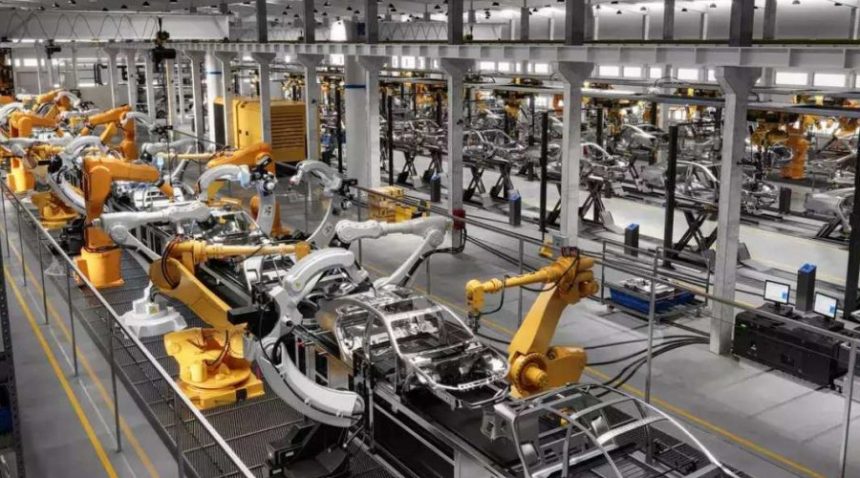Discover how policies, FDI, and sectoral growth are driving India’s manufacturing boom
India is rapidly positioning itself as a global manufacturing hub, driven by strategic government initiatives, significant foreign investments, and a burgeoning domestic market. This transformation is evident across various sectors, including electronics, automotive, aerospace, and semiconductors.
Government Initiatives and Policies
The Indian government has implemented several policies to bolster the manufacturing sector. The “Make in India” initiative, launched in 2014, aims to increase the manufacturing sector’s growth rate to 12-14% per annum and create 100 million additional manufacturing jobs by 2022. Although the target year has passed, the initiative continues to drive efforts toward enhancing manufacturing capabilities.
Complementing this is the Production-Linked Incentive (PLI) scheme, which offers financial incentives to manufacturers in 14 key sectors, including electronics, pharmaceuticals, textiles, and white goods. Since its inception in 2020, the PLI scheme has attracted over $17 billion in investments, leading to production worth approximately ₹11 trillion (about $131.6 billion) and the creation of nearly one million jobs over four years.
Foreign Direct Investment (FDI) and International Collaborations
India’s liberalized FDI policies have made it an attractive destination for foreign investors. In the automotive sector, Japan’s Suzuki Motor Corporation announced plans in February 2025 to increase global sales by nearly 33% to 4.2 million vehicles by 2030, with India expected to account for 60% of these sales. Suzuki plans to invest 2 trillion yen (approximately $13 billion) by 2030, with 60% allocated to India. This investment aims to boost manufacturing capacity to meet local demand and develop India as an export hub for Africa and the Middle East.
In the electronics sector, U.S.-based chip toolmaker Lam Research announced in February 2025 an investment of over ₹100 billion (approximately $1.2 billion) in Karnataka to bolster India’s semiconductor ecosystem. This move aligns with India’s goal to establish a competitive semiconductor industry, projected to be worth $63 billion by 2026.
Growth in the Electronics and Semiconductor Industries
India has emerged as a global hub for electronics manufacturing, particularly in smartphone production. Apple Inc., traditionally reliant on China for manufacturing, has shifted a portion of its production to India. As of 2025, India has become Apple’s largest exporter of mobile phones, with iPhone exports exceeding $12 billion in the 2023-24 fiscal year. Projections indicate that by 2027, 25% of all iPhones will be manufactured in India.
The semiconductor industry is also witnessing significant growth. In September 2024, Israel’s Tower Semiconductor and India’s Adani Group announced a $10 billion investment to establish a semiconductor manufacturing plant in Maharashtra. This initiative aligns with India’s strategy to position itself as a leading global chipmaker.
Aerospace Industry Expansion
Global aerospace companies are increasingly sourcing parts from India due to supply chain disruptions in the West. Companies like Airbus, Collins Aerospace, Pratt & Whitney, and Rolls-Royce have turned to Indian firms to maintain production levels amid rising air travel demand. For instance, Bengaluru-based Hical Technologies aims to double its aerospace division revenue to $57.57 million within three years. The Indian aerospace industry is evolving from basic manufacturing to more complex tasks such as design and system integration, with projections to capture 10% of the global supply chain market within a decade.
Challenges and Future Outlook
Despite these advancements, challenges persist. The manufacturing sector’s contribution to India’s GDP has remained relatively stagnant, hovering around 17.3% between 2013-14 and 2023-24.
To address this, the Indian government has introduced reforms, including adjustments in customs duties, incentives for clean technology, and enhanced support for Micro, Small, and Medium Enterprises (MSMEs). The 2025-26 budget reflects these efforts, aiming to strengthen manufacturing through various policy measures.
In conclusion, India’s journey toward becoming a global manufacturing hub is marked by strategic initiatives, substantial foreign investments, and sector-specific growth. While challenges remain, the concerted efforts of the government and industry stakeholders position India favorably on the global manufacturing stage.






